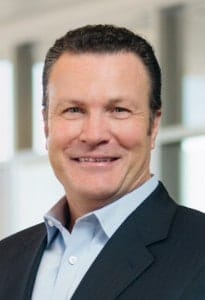 By Ken Comée, CEO, CareCloud
By Ken Comée, CEO, CareCloud
Delivering top quality care to patients while running a profitable practice is not only a business challenge, but can also leave many physicians feeling overwhelmed. Reimbursement models are shifting and new administrative requirements from multiple stakeholders can distract physicians from their primary mission of providing great care. However, for the third year in a row, CareCloud surveyed more than 5,000 doctors for the company’s annual Practice Profitability Index (PPI), and this year’s results, for the first time, show a rise in optimism.
This is promising news in a sector that has been marred by regulatory challenges, financial pressures, and mounting administrative burdens. The PPI reveals an increasing number of physicians who expect to grow profits or at least hold the line against losses in the years to come as practices find their footing in a shifting healthcare landscape. Another key finding from the PPI survey is that physicians are proactively seeking ways to manage new challenges and take control of rising costs.
The PPI survey revealed that declining reimbursement and rising costs remain top concerns for physicians; 62% report concern about reimbursement decreases and 55% cite rising costs as a key worry. Additionally, physicians report that administrative work continues to hamper efficiency, with 60% saying that they spend a day or more per week on paperwork. In fact, respondents cited the administrative toll as the number one factor for physicians who are looking to sell their practices, though the overall share of doctors who indicated a desire to sell their practice stake or merge decreased to 35%.
New Processes and Technology to Boost Performance
The good news is that physicians aren’t giving up on their practices; instead, they are reacting to industry pressures by deploying new technology and processes designed to improve practice performance. Of those physicians who reported making changes in the coming year, 40% said they’d focus on billing and collections processes, 34% on staffing and a third on technology. Since only a paltry out of five physicians said their current technology, processes and staff are handling reimbursements effectively, a finding that has remained static across the annual surveys, the focus on billing is no surprise.
The PPI also indicates that “rip and replace,” a trend in which practices implement new core health IT systems (most notably Electronic Health Records (EHR) systems), is still the predominant theme. Physicians continue to invest in new modern systems to improve practice management and almost a quarter say they plan to replace their current EHR or buy one for the first time. In a trend that tracks across the non-healthcare sector, about a quarter of physicians also report they are considering deploying analytics to improve performance, and 13% say they will invest in a new analytics solution for that purpose.
So what does the continued popularity of “rip and replace” say about the current state of physician attitudes toward practice management? The primary message appears to be that they are unwilling to settle for traditional health IT systems and are looking for modern solutions. Physicians who plan to switch systems say they are seeking a more user-friendly solution that streamlines workflows and integrates with other technologies, with nearly 40% citing integration capabilities as the primary reason for making a switch. Looking for a more cost-effective solution was also a key driver for switching.
New Patient and Peer Engagement Opportunities
In addition to more efforts to improve practice performance, the PPI indicates that physicians are excited about new opportunities to engage with patients and peers. More than one in five physicians expressed optimism about patient portals and disease management programs, and a similar number saw mergers and the addition of ancillary services as promising developments.
It’s early yet in 2016 to predict whether the year will see significant improvements in practice profitability, but the PPI indicates that many physicians are taking a proactive approach and addressing business issues head on with new processes and technologies. By managing their revenue cycles more effectively, investing in technology to manage daily workflow more efficiently, and seeking new solutions for patient engagement, physicians today are signaling that they are taking control of their own destinies. That’s a positive development for patients, doctors and the entire industry.
Throughout the year, our writers feature fresh, in-depth, and relevant information for our audience of 40,000+ healthcare leaders and professionals. As a healthcare business publication, we cover and cherish our relationship with the entire health care industry including administrators, nurses, physicians, physical therapists, pharmacists, and more. We cover a broad spectrum from hospitals to medical offices to outpatient services to eye surgery centers to university settings. We focus on rehabilitation, nursing homes, home care, hospice as well as men’s health, women’s heath, and pediatrics.







